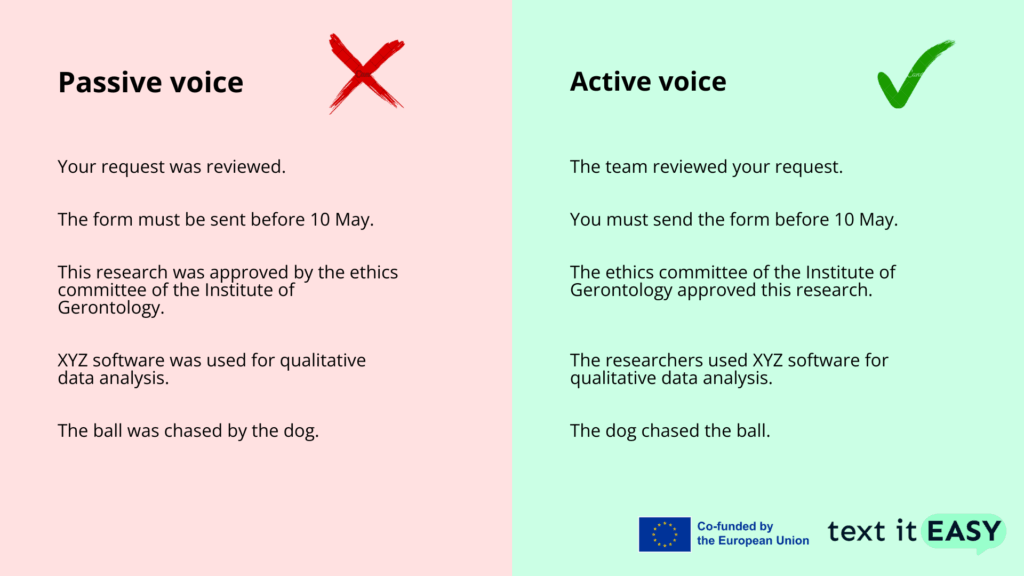Goal: Promote the use of active voice to make writing clearer, more direct, and easier for readers to understand who is responsible for each action.
Active voice makes your writing clearer and more direct. It shows who is doing what.
In an active voice, the subject of the sentence does the action.
In passive voice, the action is done to the subject—often without saying by whom.
Compare:
NO: Passive: “Your request was reviewed.”
YES: Active: “The team reviewed your request.”
Passive voice isn’t always wrong, but too much of it makes writing vague and bureaucratic. It hides responsibility and makes the message harder to follow.
Especially in instructions or decisions, active voice helps people understand the process and their role in it.
NO: “The form must be sent before 10 May.”
YES: “You must send the form before 10 May.”
Sometimes, the passive voice is fine—especially when the actor is unknown or not important. For example:
“The package was stolen.”
But in most public communication, the active voice is clearer and more human.
Tip:
If you see “is/was/were” + past participle (e.g. “was submitted”), check if you can rewrite it actively.
Try it:
Look at the text, for example on the website of your organisation, and analyse the use of passive voice. Is it necessary? Can it be changed to active voice? If yes, make the necessary modifications.
